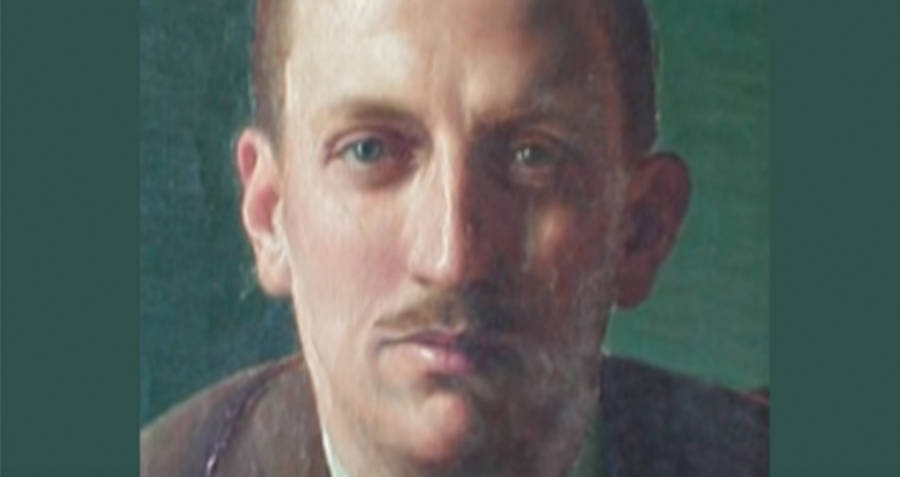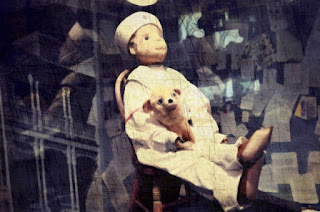Robert The Doll. Story Behind World's Most Terrifying Doll.
- Get link
- X
- Other Apps
Old-timey dolls can be creepy, but Robert the Doll might be the creepiest.
For one, he’s life-sized and dressed in an actual child’s clothing. For another, his eyes are vacant-looking black beads, and his cheeks are pocked with holes. For another, the dog on his lap has big, bulging eyes, and a long tongue hanging maniacally out of its mouth.
Also, Robert can supposedly move on his own, follow you with his creepy eyes, audibly giggle, and wreak havoc on your life if you disrespect him.
That last part is probably the creepiest.
Robert The Doll’s Origins
Robert the Doll was once shiny and new. In 1904, he was manufactured by the Steiff Company, whose namesake, Richard Steiff, created one of the first teddy bears. The company claimed that Robert was never intended to be a toy; instead, he was manufactured as a mannequin for a window display.
The story of Robert the Doll really begins before he even was a doll, as how he ended up being sold as a toy remains a mystery. Also up for debate is how he ended up in the hands of his owner, a young Key West boy named Robert Eugene Otto, who went by “Gene.”

The story of how Robert made it into the hands of the young boy has been whittled down to two legends.
Believers in Robert’s supernatural abilities stick to the more mysterious version: that a maid of the Otto family, a young girl of Bahamian descent, imbibed the doll with voodoo magic and gifted it to young Robert as retaliation for wrongdoing.
Those who are more skeptical of the doll’s gifts are more inclined to believe the “official” version of events, which was that Robert the Doll was purchased by Otto’s grandfather, who bought the doll in Germany and gifted him to his young grandson.

Regardless of how he came by it, young Otto instantly fell in love with Robert the Doll. He took him everywhere and dressed him in his own clothes — a sailor suit he had once worn as a baby.
“What people really remember is what they would probably term as an unhealthy relationship with the doll,” said Cori Convertito, a Robert the Doll expert and curator of the museum where he currently resides. “He brought it everywhere, he talked about it in the first person as if he weren’t a doll, he was Robert. As in he is a live entity.”
The Creepiness Beings
Otto loved his doll so much that he built a room for him in the attic, complete with furniture and toys perfectly proportioned for the black-eyed Robert.
Soon, however, strange things began happening around the Otto household. Things would move on their own and Gene began blaming frequent mishaps on the doll, insisting it was Robert who was at fault.
At first, his parents brushed off his claims — just silly child’s play, they thought — but before long others noticed strange things happening around Robert.
After studying at the Academy of Fine Arts in Chicago, and the Art Students League in New York, Gene Otto went to the Parisian Sorbonne, where he met his wife, Anne. He brought he back to his childhood home, at 534 Eaton Street in the Key West, which he called “The Artist House.”

As he was no longer being carried around by Gene, Robert the Doll took up a permanent position in a chair facing out of an upstairs window where he could be seen by passersby below.
Once, a plumber who had been hired to make repairs around the Otto’s home claimed to hear children’s laughter, though Gene was not home at the time. When he looked around the room, he noticed that Robert the Doll had moved from one side of it to the other, seemingly on his own. What’s more, the plumber swore that toys and objects that had been in Robert’s lap ended up on the other side of the room — as if he’d thrown them.
Though the placement was a playful one, people who passed by were soon avoiding walking past the house altogether. They would swear that the doll would disappear and reappear facing another direction, or that his gaze would follow them as they passed.
Visitors to the Artist House claimed that they would hear footsteps coming from the attic, and that things would seem to move about the home on their own, with no explanation.
Robert The Doll Gets A New Caretaker

After Otto died in 1974, a woman named Myrtle Reuter purchased the Artist House. Along with the beautiful Colonial Queen Anne abode, Reuter came into ownership of some of its contents, including Robert the Doll.
For 20 years she lived with Robert — even taking him with her when she moved to a new home in the 1980s — and for 20 years, he’d move around inexplicably.Finally, she donated him to the Fort East Martello Museum, citing one reason for her donation: the doll was haunted.
The museum took on the doll, assuming that Reuter’s claims were just the silly rantings of an old woman. The staff did not put him on display, instead keeping him in a storeroom until he could be incorporated into their exhibits.
Almost as soon as the Robert the Doll arrived, however, so did numerous visitors wanting to see him. Despite no press being released on Robert, people somehow learned that the museum had a haunted doll. Letters also began arriving from people begging Robert for forgiveness or offering apologies for the disrespect they’d caused.
Eventually, the museum appeased their visitors and put the mysterious doll on display. Today, Robert the Doll sits safely behind glass, rarely taken from his case. People still visit daily, hoping to catch a glimpse of him moving.
Even after 115 years, his powers seem to be as sharp as ever: Visitors claim that cameras malfunction in his presence and electronic devices go haywire.
- Get link
- X
- Other Apps





Comments
Post a Comment